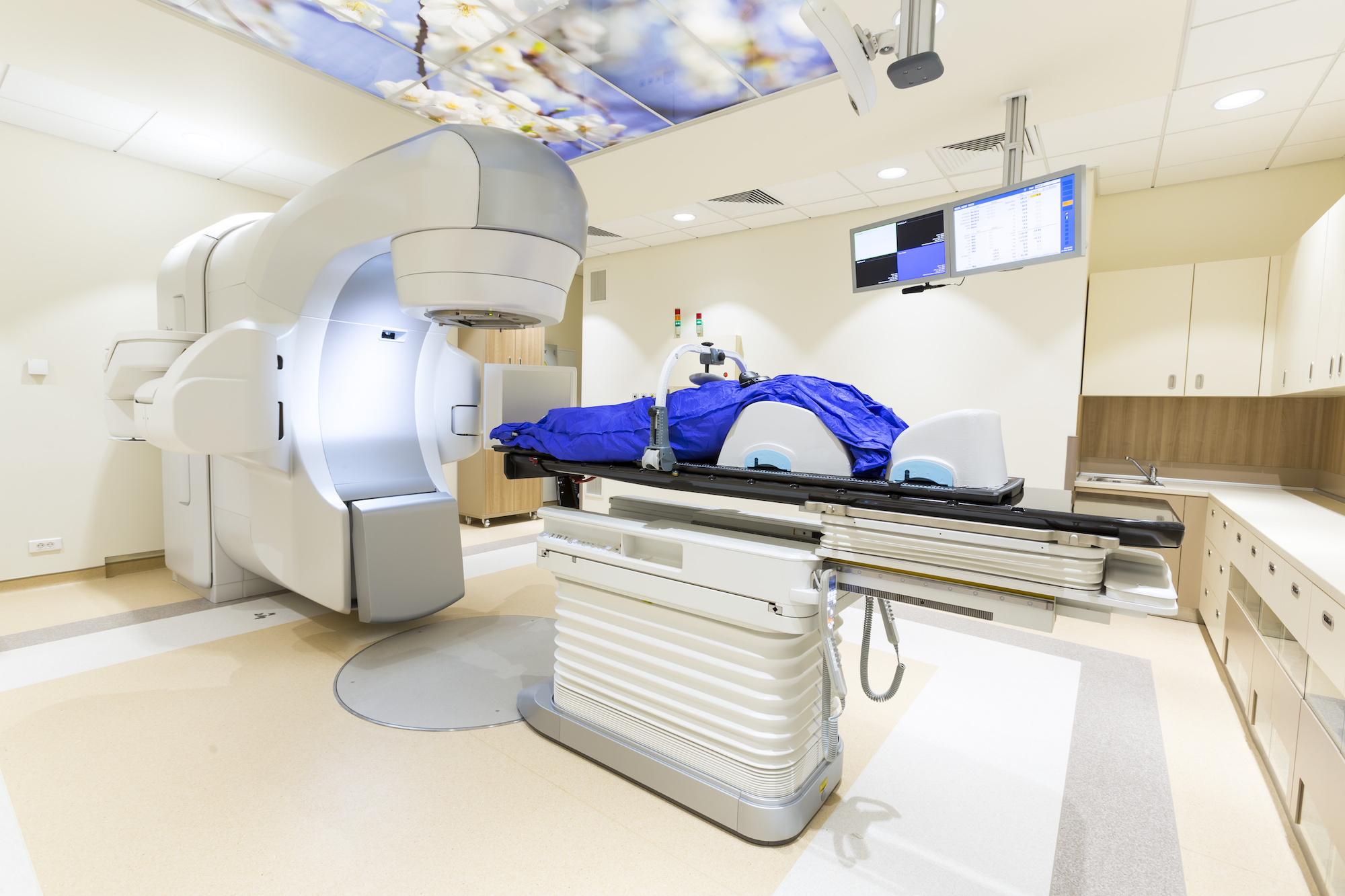 For many patients with skin cancer, radiation therapy can be a safe, effective cancer treatment. Radiation therapy is often used to treat basal cell carcinoma, the most common form of skin cancer; squamous cell carcinoma, the second-most common form of skin cancer; and in some instances, melanoma, one of the most serious forms of skin cancer. While radiation therapy may be used alone, it is often used in concert with surgery or other cancer treatments. Melanoma in particular is usually treated first with surgery, then with radiation, chemotherapy, immunotherapy, or a combination of these.
For many patients with skin cancer, radiation therapy can be a safe, effective cancer treatment. Radiation therapy is often used to treat basal cell carcinoma, the most common form of skin cancer; squamous cell carcinoma, the second-most common form of skin cancer; and in some instances, melanoma, one of the most serious forms of skin cancer. While radiation therapy may be used alone, it is often used in concert with surgery or other cancer treatments. Melanoma in particular is usually treated first with surgery, then with radiation, chemotherapy, immunotherapy, or a combination of these.
“Radiation therapy can often cure basal cell and squamous cell carcinoma as well as significantly slow the growth of melanoma, which can buy valuable time for other treatments to come into play,” says Dr. Adam Mamelak, board certified dermatologist and skin cancer expert in Austin, Texas.
The most common form of radiation therapy used for skin cancer is known as external beam radiotherapy (ERT), or superficial radiation therapy (SRT). In this form of radiation therapy, an external radiation source is used to direct radiation to the tumor or area to be treated. The treatment process is very similar to getting an x-ray and is completely painless. Also, while an individual treatment sessions is fairly quick, patients do require several treatment sessions.
Like all forms of radiotherapy, ERT does have a number of side-effects. This includes side-effects similar to a sunburn, such as redness, itching, blistering, and scabbing in the area of treatment. The skin can breakdown and ulcerate in the treated area and require some time to heal. Patients may also experience hair loss in the treated area as well as a permanent change in skin tone or color. Other side-effects include nausea, vomiting, and fatigue.
While Dr. Mamelak has treated patients with radiation for their skin cancer, he states he is cautious to recommend this therapy for a few reasons.
“The cure rates with radiation therapy are very high, but not as high as other treatments,” says Dr. Mamelak. “Mohs surgery, for example, offers an over 99% cure rate, while radiation is not as much. If the skin cancer recurs after treatment, radiation cannot be used again in the same area. Furthermore, surgery is more difficult and healing can be much more prolonged on irradiated skin.”
Dr. Mamelak also warns of other risks with radiation therapy. “It is well established that new skin cancers can develop in irradiated areas 10 to 20 years after the initial treatment. This was not a major concern when radiation was being used in elderly patients. However, with the new trend to use radiation in younger and younger patients, history has shown that these patients may be putting themselves at risk for more skin cancers years down the road.”
Contact Us
Dr. Mamelak treats patients with skin cancer at Sanova Dermatology and the Austin Mohs Surgery Center. Trying to decide the best way to manage your skin condition? Contact us today for any questions you may have about skin cancer and its treatments.
